3. Hagens Moellebaek
The pilot area Hagens Moellebaek in northwestern Jutland covers an area of 2762 ha and belongs to Skive municipality. The area is located close to Skive Fjord and is delineated by the water catchment. The soil contains both clay and sand and the terrain is relatively even apart from steep slopes near watercourses. The area is suitable for agriculture and also represents the highest intensive agricultural area and the lowest nature cover outside agriculture of all the 7 pilot areas.
Download a complete PDF version here.
Map: Geographical location of the pilot area Hagens Moellebaek.
LAND USE
The main land use near Hagens Moellebaek is intensive agriculture (75.9 %) followed by urban areas (13.2 %) and nature areas outside agriculture such as forest, water, and open nature (3.2 %) (map and table). The area thereby represents – together with the Lammefjord – the pilot areas with most agricultural area (the Lammefjord = 74 %) (figure). Furthermore, Hagens Moellebaek has the lowest percentage nature outside agriculture followed by the area near the Lammefjord (6 %) (figure).
Land use is illustrated on the map and the belonging table for Hagens Moellebaek below. Furthermore, land use for the 7 pilot areas is illustrated in the figure.
Map: Land use in the pilot area Hagens Moellebaek in 10×10 meters resolution.
Table: Land use in Hagens Moellebaek in hectare (ha) and share of total area in percent (%).
Figure: Land use in the 7 pilot areas described as share of total area in percent (%). The pilot areas are listed to % agriculture.
SOIL PROPERTIES
Overall the western soils of Denmark contain a high sand percentage whereas the eastern parts are dominated by the more heavy soils – clay (map 1). Hagens Moellebaek is located in northwestern Jutland and the soil of the area is characterized by a higher clay percentage compared to the surrounding soils (sandy soils = 47.3 %, clay soils = 50.1 %) (map 2 and table).
The soil types of the pilot area are illustrated on map 2 and the belonging table below.
Map 1: Soil type in Denmark.
Map 2: Distribution of soil types in the pilot area near Hagens Moellebaek in 30.4×30.4 meters resolution.
Table: Distribution of soil types in the pilot area near Hagens Moellebaek in hectare (ha) and share of the total area in percent (%).
TOPOGRAPHY
Hagens Moellebaek has an elevation varying from 1 to 52 meters above the sea level (map 1) and a slope of the terrain from 0 to 10 degrees (map 2). It is a relatively flat area except from steep slopes near watercourses. This makes the area suitable for agriculture.
Map 1: Elevation in Denmark (a) and in the pilot area near Hagens Moellebaek (b) in 48×48 meters resolution.
Map 2: Slope of the terrain in Denmark (a) and in the pilot area near Hagens Moellebaek (b) in 48×48 meters resolution
HYDROLOGY
Wetness is here illustrated by the topographical wetness index. The wetness index calculates how much water a given point in the terrain potential can receive (the size of the catchment) in relation to its ability to drain itself (slope of the terrain). The index expresses the ability of the point to accumulate water. It is based alone on placement of the point in the terrain and the shape of the terrain, and does not include other factors such as soil type, precipitation, etc.
The pilot area is delineated by the watercourse systems of the area.
Map: Topographical wetness index in Denmark (a) and in the pilot area near Hagens Moellebaek (b) in 48×48 meters resolution.


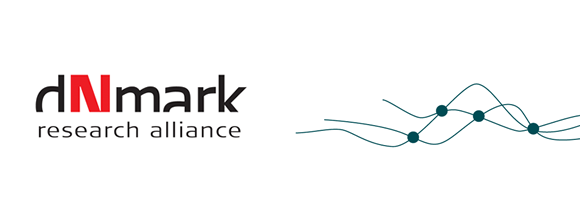



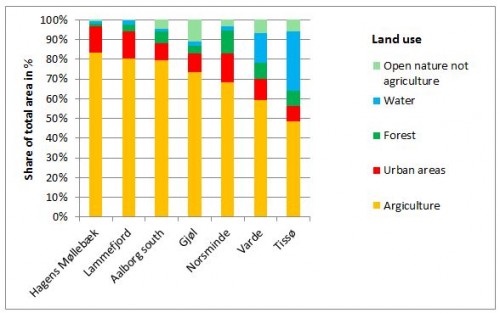

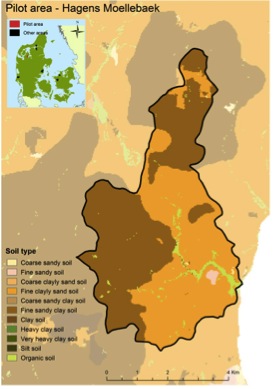



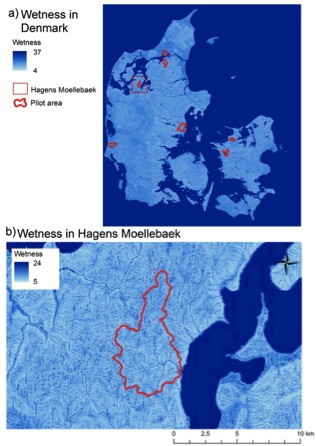
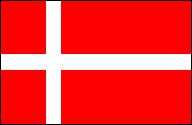 Danish
Danish